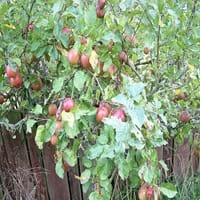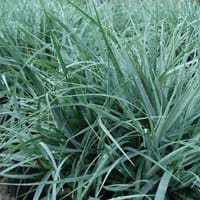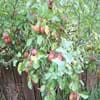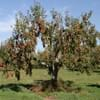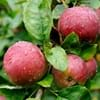Life Span
Perennial
Perennial
Origin
Eastern Europe, Southern Europe, Russia/Siberia, Southern Asia, Western Asia
Northeastern United States, Western Europe
Types
Not available
Not available
Habitat
Hillside, Mountain Slopes, Temperate Regions
Grassland, moorlands
USDA Hardiness Zone
4-8
4-8
Sunset Zone
2a, 2b, 3a, 3b, 7
3a, 3b, 4, 5, 6, 7, 8, 9, 14, 15, 16, 17, 18, 19, 20, 21, 22, 23, 24
Habit
Oval or Rounded
Clump-Forming
Flower Color
White, Rose
Yellow green
Flower Color Modifier
Bicolor
Bicolor
Fruit Color
Yellow, Red
Light brown
Leaf Color in Spring
Green
Blue Green, Gray Green, Gray
Leaf Color in Summer
Green
Blue Green, Gray Green, Gray
Leaf Color in Fall
Green, Light Yellow, Brown
Blue Green, Gray Green, Gray
Leaf Color in Winter
Light Green
Not Available
Leaf Shape
Oblong
Long hair-like leaves
Plant Season
Spring, Fall
Spring, Summer, Fall
Sunlight
Full Sun, Partial Sun, Partial shade
Partial Sun, Partial shade
Growth Rate
Medium
Medium
Type of Soil
Clay, Loam
Clay, Loam, Sand
The pH of Soil
Acidic, Neutral
Acidic, Neutral, Alkaline
Soil Drainage
Well drained
Average
Bloom Time
Early Spring, Spring
Early Summer
Tolerances
Drought
Drought
Where to Plant?
Ground
Ground
How to Plant?
Grafting, Seedlings, Transplanting
Divison
Plant Maintenance
Medium
Low
Watering Requirements
Medium
Average Water Needs
In Summer
Lots of watering
Lots of watering
In Spring
Moderate
Moderate
In Winter
Average Water
Average Water
Soil pH
Acidic, Neutral
Acidic, Neutral, Alkaline
Soil Type
Clay, Loam
Clay, Loam, Sand
Soil Drainage Capacity
Well drained
Average
Sun Exposure
Full Sun, Partial Sun, Partial shade
Partial Sun, Partial shade
Pruning
Remove damaged leaves, Remove dead branches, Remove dead leaves
Remove damaged leaves, Remove dead branches, Remove dead leaves
Fertilizers
All-Purpose Liquid Fertilizer
All-Purpose Liquid Fertilizer
Pests and Diseases
Black rot, Leaf spot, Scab
Aphids, Brown Spots, Galls
Plant Tolerance
Drought
Drought
Flowers
Showy
Insignificant
Flower Petal Number
Single
Single
Foliage Texture
Medium
Fine
Foliage Sheen
Matte
Matte
Allergy
Mouth itching, Throat itching
Not Available
Aesthetic Uses
Not Used For Aesthetic Purpose
Cottage Garden, Ground Cover, Landscape Designing
Beauty Benefits
Not Available
Not Available
Environmental Uses
Air purification
Air purification
Medicinal Uses
Cancer, constipation, Diabetes, Diarrhea, Dysentry, Fever, Heart problems, Tooth ache
Not Available
Part of Plant Used
Fruits
Leaves
Other Uses
Used As Food, Wood is used for making furniture
Used for Landscaping
Used As Indoor Plant
No
No
Used As Outdoor Plant
Yes
Yes
Garden Design
Edible, Feature Plant, Fruit / Fruit Tree
Edging, Groundcover, Mixed Border
Botanical Name
MALUS domestica 'Jonathan'
CAREX flacca
Common Name
Apple, Eating Apple, Jonathan Apple
blue sedge, gray carex, glaucous sedge, carnation-grass
In Hindi
जोनाथन सेब
ब्लू सेज
In German
Jonathan (Apfel)
Blau-Segge
In French
Jonathan (pomme)
Bleu carex
In Spanish
Jonathan manzana
azul de la juncia
In Greek
Jonathan μήλο
μπλε σπαθόχορτο
In Portuguese
Jonathan maçã
azul Sedge
In Polish
Jonatan (jabłko)
niebieski turzyca
In Latin
Apple Ionathan
blue Sedge
Phylum
Magnoliophyta
Magnoliophyta
Class
Magnoliopsida
Liliopsida
Family
Rosaceae
Cyperaceae
Clade
Angiosperms, Eudicots, Rosids
Angiosperms, Commelinids, Monocots
Tribe
Not Available
Not Available
Subfamily
Not Available
Not Available
Number of Species
Not Available
Importance of Jonathan Apple and Blue Sedge
Want to have the most appropriate plant for your garden? You might want to know the importance of Jonathan Apple and Blue Sedge. Basically, these two plants vary in many aspects. Compare Jonathan Apple and Blue Sedge as they differ in many characteristics such as their life, care, benefits, facts, etc. Every gardener must at least have the slightest clue about the plants he wants to plant in his garden. Compare their benefits, which differ in many ways like facts and uses. The medicinal use of Jonathan Apple is Cancer, constipation, Diabetes, Diarrhea, Dysentry, Fever, Heart problems and Tooth ache whereas of Blue Sedge is Not Available. Jonathan Apple has beauty benefits as follows: Not Available while Blue Sedge has beauty benefits as follows: Not Available.
Compare Facts of Jonathan Apple vs Blue Sedge
How to choose the best garden plant for your garden depending upon its facts? Here garden plant comparison will help you to solve this query. Compare the facts of Jonathan Apple vs Blue Sedge and know which one to choose. As garden plants have benefits and other uses, allergy is also a major drawback of plants for some people. Allergic reactions of Jonathan Apple are Mouth itching and Throat itching whereas of Blue Sedge have Not Available respectively. Having a fruit bearing plant in your garden can be a plus point of your garden. Jonathan Apple has showy fruits and Blue Sedge has no showy fruits. Also Jonathan Apple is not flowering and Blue Sedge is not flowering . You can compare Jonathan Apple and Blue Sedge facts and facts of other plants too.
